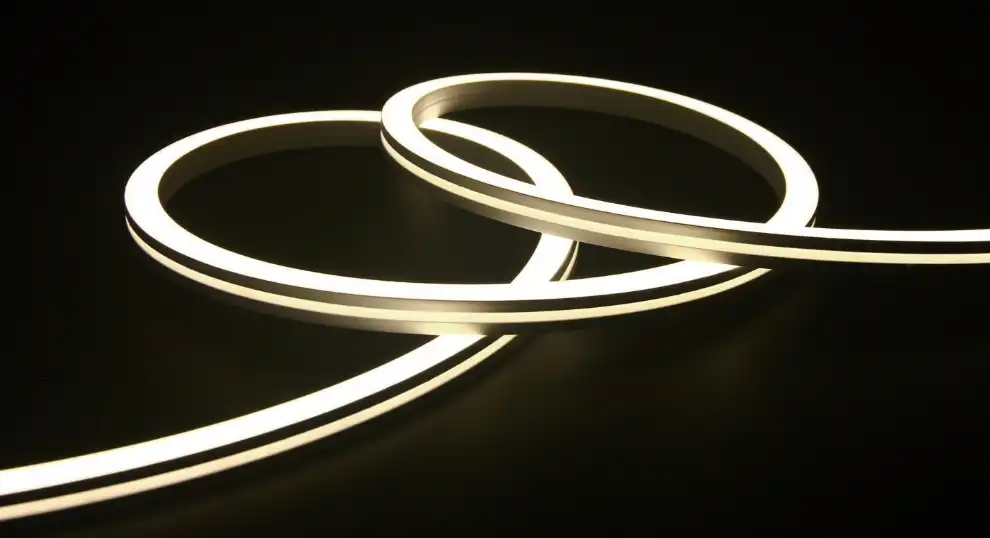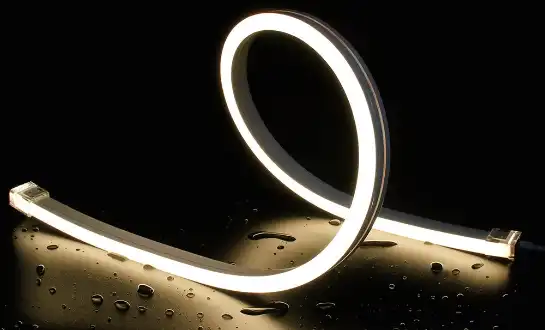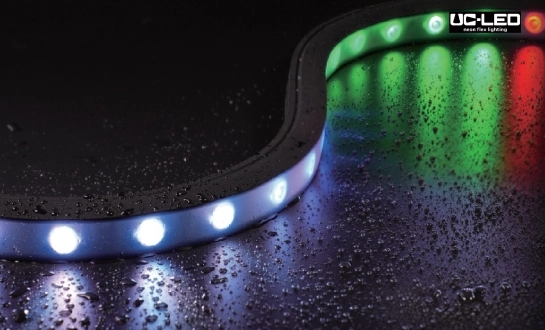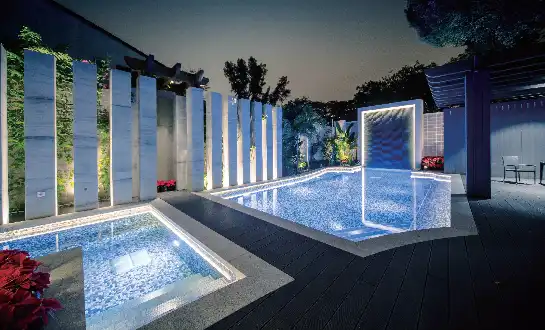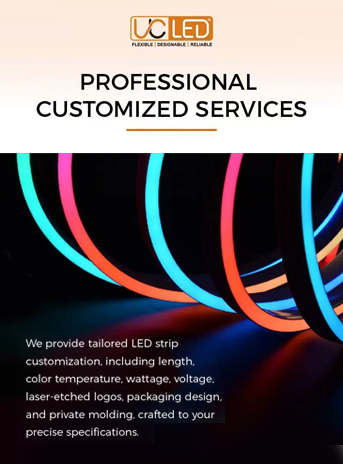Understanding Neon Flex Lighting and Its Properties
Neon flex lighting has revolutionized the world of decorative illumination, offering a versatile and energy-efficient alternative to traditional neon signs. Unlike its glass predecessor, neon flex is crafted from flexible PVC or silicone, housing a series of LED lights that mimic the iconic glow of neon gas. This modern twist on a classic lighting solution has opened up a plethora of design possibilities, particularly when it comes to curved surfaces.
The flexibility of neon flex lighting is one of its most salient features. It can bend and conform to various shapes, making it ideal for outlining architectural elements, accentuating curved facades, or creating eye-catching signage. However, this flexibility also presents unique challenges when it comes to installation, especially on curved surfaces.
Composition and Durability
Neon flex lighting consists of several key components:
- A flexible PVC or silicone tube
- A series of LED chips
- An internal circuit board
- Power supply units
The durability of neon flex lighting is noteworthy. High-quality products are designed to withstand various environmental conditions, including UV exposure, moisture, and temperature fluctuations. This resilience makes neon flex lighting suitable for both indoor and outdoor applications, provided it's installed correctly.
Light Output and Color Options
One of the advantages of neon flex lighting is its consistent light output along the entire length of the strip. This uniformity is crucial when illuminating curved surfaces, as it ensures an even glow without hot spots or dark areas. Moreover, neon flex lighting is available in a wide array of colors, including RGB options that allow for dynamic color-changing effects. This versatility enables designers and installers to create stunning visual displays that can transform any curved surface into a captivating focal point.
Preparing for Curved Surface Installation
Before embarking on the installation of neon flex lighting on curved surfaces, thorough preparation is essential. This preparatory phase can make the difference between a professional-looking installation and one that appears haphazard or amateurish.
Surface Assessment and Cleaning
The first step in preparation is to assess the curved surface where the neon flex lighting will be installed. Consider the following factors:
- Material composition of the surface (metal, wood, concrete, etc.)
- Texture and porosity
- Presence of any existing fixtures or obstacles
- Exposure to environmental elements
Once assessed, the surface must be meticulously cleaned. Remove any dirt, dust, grease, or old adhesive residue. For outdoor installations, ensure the surface is completely dry to promote better adhesion. Use appropriate cleaning agents that won't damage the surface or leave residues that could interfere with the adhesive.
Measuring and Planning
Accurate measurements are crucial when working with curved surfaces. Use a flexible measuring tape to determine the exact length of neon flex lighting required. It's advisable to add a small allowance for any potential adjustments during installation.
Create a detailed plan or template of the installation. This can be done by:
- Using a piece of string to trace the curve
- Creating a paper or cardboard template
- Utilizing digital planning tools for complex designs
Consider the power source location and plan the routing of cables to ensure they're discreetly hidden. For large installations, it may be necessary to segment the neon flex lighting to manage power distribution effectively.
Gathering the Right Tools and Materials
Having the correct tools and materials at hand will streamline the installation process. Essential items include:
- Neon flex lighting of appropriate length and color
- Mounting clips or channels suitable for curved surfaces
- High-quality adhesive compatible with both the neon flex and the surface material
- Cutting tools (if customization is required)
- Heat gun (for tight curves)
- Electrical tools for wiring and connections
- Safety equipment (gloves, safety glasses)
It's crucial to choose mounting hardware specifically designed for curved applications. Standard straight clips may not provide adequate support and could lead to an uneven installation.
Advanced Installation Techniques for Curved Surfaces
Installing neon flex lighting on curved surfaces requires a blend of technical skill and artistic finesse. The goal is to achieve a smooth, continuous line of light that follows the contours of the surface perfectly. Here are some advanced techniques to ensure a professional installation:
Preforming the Neon Flex
For surfaces with a consistent curve, preforming the neon flex can lead to better results:
1. Measure the radius of the curve accurately.
2. Create a template using a rigid material with the same curvature.
3. Gently shape the neon flex around the template, holding it in place with temporary fasteners.
4. Allow the neon flex to "set" in this curved position for several hours or overnight.
5. This preforming technique helps reduce stress on the neon flex during installation and results in a more natural-looking curve.
Segmented Installation for Complex Curves
For surfaces with varying curvatures or compound curves, a segmented approach may be necessary:
1. Divide the curve into smaller sections with similar radii.
2. Install each segment separately, using appropriate mounting techniques for each section.
3. Carefully align the segments to ensure a seamless appearance.
4. Use connector pieces designed for neon flex to join the segments electrically while maintaining a continuous look.
Handling Tight Curves and Corners
Extremely tight curves or corners require special attention:
- Use a heat gun to carefully warm the neon flex, making it more pliable. Be cautious not to overheat, which can damage the internal components.
- For sharp corners, consider creating a "pixel turn" by cutting the neon flex at a 45-degree angle and rejoining it to form a crisp corner.
- In some cases, it may be preferable to use a corner connector piece specifically designed for neon flex lighting to maintain a professional appearance.
Securing and Protecting the Installation
Once the neon flex is in place, proper securing and protection are crucial:
- Use mounting clips at regular intervals, ensuring they're firmly attached to the surface.
- Apply a thin bead of silicone sealant along the edges of the neon flex for added water resistance in outdoor installations.
- Consider using a protective cover or channel in high-traffic areas or where the neon flex might be exposed to potential damage.
By employing these advanced techniques, installers can overcome the challenges posed by curved surfaces and create stunning neon flex lighting displays that enhance any space. The key lies in careful planning, patient execution, and attention to detail throughout the installation process.
Conclusion
Installing neon flex lighting on curved surfaces presents unique challenges, but with the right approach, it can result in breathtaking visual displays. By understanding the properties of neon flex lighting, thoroughly preparing the installation surface, and employing advanced techniques, professionals can achieve seamless, eye-catching results that enhance any curved architectural element or design feature.
The key to success lies in meticulous planning, precise measurement, and patient execution. Preforming the neon flex, using segmented installation for complex curves, and carefully handling tight bends are all crucial techniques that contribute to a polished final product. Moreover, proper securing and protection of the installation ensure longevity and consistent performance.
As technology advances and neon flex lighting continues to evolve, we can expect even more innovative solutions for curved surface applications. The versatility and energy efficiency of this lighting option make it an attractive choice for designers and architects looking to add a dynamic, modern touch to their projects.
FAQ
What is the minimum bending radius for neon flex lighting?
The minimum bending radius typically ranges from 2-4 inches, depending on the specific product. Always check the manufacturer's specifications.
Can neon flex lighting be cut to custom lengths?
Yes, most neon flex lighting can be cut at designated points, usually marked every few inches along the strip. However, always follow the manufacturer's guidelines for cutting and sealing.
How long does neon flex lighting typically last?
High-quality neon flex lighting can last up to 50,000 hours or more when properly installed and maintained. This longevity makes it a cost-effective solution for long-term lighting projects.
Expert Neon Flex Lighting Solutions | QUAN HE
At QUAN HE Lighting Co., Ltd., we specialize in premium linear lighting solutions, including high-quality neon flex lighting. Our expert R&D team and state-of-the-art manufacturing facility ensure top-notch products tailored to your specific needs. With over a decade of experience, we offer comprehensive OEM and ODM services, delivering innovative lighting solutions for curved surfaces and beyond. Trust our ISO-certified processes and global partnerships for your next lighting project. Contact us at Linda@uc-led.com for professional guidance and customized neon flex lighting solutions.
References
1. Johnson, E. (2022). "Advanced Techniques in Neon Flex Lighting Installation." Architectural Lighting Quarterly, 45(3), 78-92.
2. Smith, R. & Brown, T. (2021). "Curved Surface Illumination: Challenges and Solutions." Journal of Lighting Design, 18(2), 112-125.
3. Lee, S. (2023). "Energy Efficiency in Modern Lighting: A Focus on Neon Flex Technology." Sustainable Building Technologies, 7(4), 201-215.
4. Garcia, M. et al. (2022). "Durability and Performance of Neon Flex Lighting in Outdoor Applications." International Journal of Architectural Engineering, 29(1), 55-70.
5. Williams, K. (2023). "The Art and Science of Curved Lighting Installations." Illumination Engineering Society Proceedings, 210-225.
